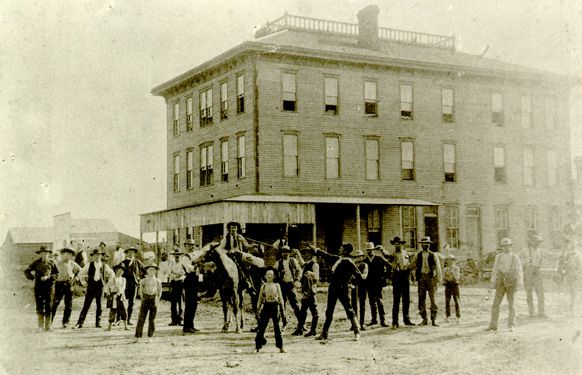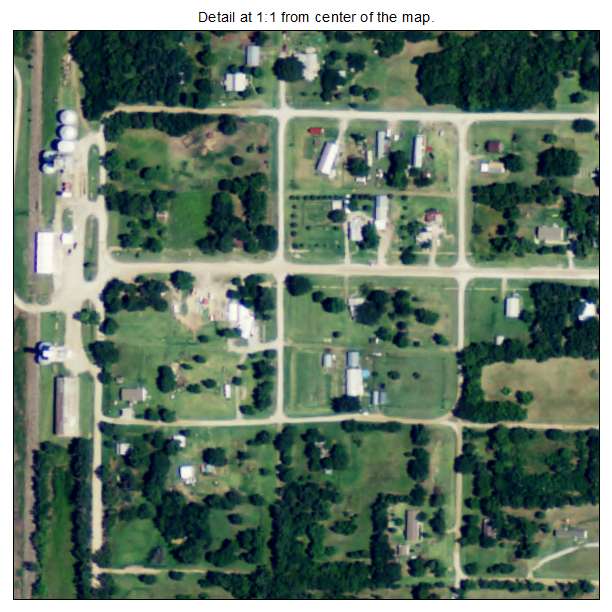
The Quiet Persistence of Hunnewell, Kansas: A Whisper on the Plains
Driving through the vast, golden plains of southern Kansas, where the horizon stretches into an endless promise of sky and earth, one might easily miss Hunnewell. It’s not a place that screams for attention. There are no flashing billboards, no sprawling shopping centers, no bustling traffic lights. Instead, Hunnewell exists as a quiet testament to a bygone era, a living, breathing archive of rural American resilience, a place where the past whispers on the wind and the future hangs in a delicate balance.
With a population hovering around 50 souls, Hunnewell is less a bustling town and more a collective memory, a whisper on the wind, a dot on the map that many navigate past without a second thought. Yet, for those who call it home, and for those who take the time to look closer, it offers a profound narrative about identity, community, and the enduring spirit of a place fighting against the encroaching tide of modernity and depopulation.
A Railroad’s Dream: Birth on the Tracks

Like countless towns across the American heartland, Hunnewell owes its very existence to the iron will and ambition of the railroad. Founded in 1880, it sprang up along the Atchison, Topeka and Santa Fe Railway line, a vital artery connecting the burgeoning West to the established East. The town was named in honor of Horatio Hollis Hunnewell, a prominent Boston financier and director of the Santa Fe Railroad, whose investments helped lay the tracks that would shape the destiny of this part of Kansas.
In its nascent years, Hunnewell was a boomtown, a hub for the surrounding agricultural community. Farmers brought their wheat and cattle to its railhead, and merchants set up shop to cater to their needs. The town boasted grain elevators, general stores, a hotel, saloons, and even a newspaper. Its strategic location, just north of the Oklahoma border in Sumner County, made it a gateway for those venturing into Indian Territory or seeking new opportunities on the frontier. Photographs from the early 20th century depict a lively main street, crowded with horse-drawn wagons and Model T Fords, a far cry from the serene stillness that defines it today.
"My grandmother used to tell stories about Saturday nights here," recounts Martha Jenkins, 78, a lifelong Hunnewell resident, her voice raspy with age and memory, as she gestures towards what was once the town’s main thoroughfare, now a quiet residential street. "The street would be packed. Farmers would come in from miles around, kids would play tag, and the general store would be open late. It was the center of everything."
The Slow Fade: An Unavoidable Retreat
The peak of Hunnewell’s prosperity, like that of many small railroad towns, was fleeting. The mid-20th century brought sweeping changes that would irrevocably alter the landscape of rural America. Mechanization of agriculture meant fewer hands were needed on the farm. Improved roads and the widespread adoption of automobiles meant farmers could bypass local merchants and travel to larger towns like Wellington or Caldwell for supplies and services. The post-World War II economic boom drew young people to urban centers in search of education and better job opportunities.
The railroad, once its lifeblood, also contributed to its decline. As freight operations became more centralized and efficient, the need for numerous small depots diminished. The passenger trains stopped coming, and eventually, many of the branch lines that served these towns were abandoned or consolidated.
"It was a slow fade," explains Robert Anderson, 65, a retired farmer whose family has tilled the soil near Hunnewell for four generations. "First, the bank closed, then the hardware store. The school consolidated with Caldwell in the 1960s, and when the kids left for school, a lot of their parents followed. There wasn’t much reason to stay unless your roots were deep."
The numbers tell a stark story. From a peak population that likely hovered around 300-400 in its early decades, Hunnewell has steadily contracted. The 2020 census recorded just 50 residents, a figure that highlights the existential challenge facing hundreds of similar communities across the Great Plains.

What Remains: Echoes and Enduring Spirits
Today, the silence in Hunnewell is profound. The wind, an omnipresent force in Kansas, whispers through the skeletal remains of what were once thriving businesses. Empty storefronts with faded paint stand as silent sentinels, their windows reflecting the vast sky. A lone, tattered American flag flaps gently from a pole outside the post office, perhaps the town’s last remaining commercial outpost and certainly its most vital connection to the outside world.
The U.S. Post Office in Hunnewell is more than just a place to send mail; it’s the town’s de facto community center, its gossip hub, and its daily pulse. "I know everyone who walks through that door," says Sarah Chen, the current postmistress, with a warm smile. "They’re not just customers; they’re my neighbors, my friends. Sometimes, I’m the only person they’ll see all day. We talk about the weather, their grandkids, who’s sick, who needs a hand. It’s more than a job; it’s a lifeline."
A few well-maintained homes, their porches often adorned with rocking chairs and planters, suggest the enduring presence of families who refuse to relinquish their hold on this quiet corner of the world. A small, well-kept church, its steeple reaching towards the heavens, serves as a spiritual anchor for the faithful few. The town park, though modest, offers a swing set and a picnic table, hinting at the joy of children who once played here and, perhaps, the occasional family gathering that still brings life to its green space.
Community as the Last Industry
In a town where traditional industries have long vanished, community itself has become Hunnewell’s most vital, and perhaps its only, thriving industry. Residents rely on each other in ways that might seem foreign to urban dwellers. Neighbors check on neighbors, especially the elderly. Shared meals, impromptu gatherings, and a collective sense of responsibility bind them together.
"You don’t need a lot of money or fancy things when you have good neighbors," says Dale Peterson, 55, a farmer who chose to stay in Hunnewell despite the challenges. "If my tractor breaks down, I know someone will be over in ten minutes to help. If someone’s sick, there’s always a casserole on their doorstep. That’s just how we do things here."
This tight-knit fabric of community is often romanticized, but in places like Hunnewell, it is a practical necessity. With limited public services and a dwindling tax base, the burden of maintaining social cohesion falls squarely on the shoulders of its residents. They are the volunteers who clean the church, the hands that tend the cemetery, and the watchful eyes that ensure everyone is accounted for.
Hunnewell as a Microcosm
Hunnewell’s story is not unique. It is a microcosm of a larger narrative playing out across rural America, particularly in the Great Plains. Thousands of small towns, born of the railroad and agriculture, are facing similar demographic shifts, economic pressures, and the slow, inexorable march of time. The challenges are immense: attracting new residents, creating job opportunities, maintaining infrastructure, and preserving a sense of identity in the face of dwindling numbers.
"It’s a struggle, no doubt," admits Eleanor Vance, a local historian and former teacher who grew up in Hunnewell and later returned after retirement. "We’re always trying to figure out how to keep the memory alive, how to tell our story. Is there a future for a town this small? I don’t know. But I do know that the spirit of this place, the hard work, the neighborliness, the quiet dignity – that’s something worth fighting for."
The question of "what comes next" hangs heavy in the Kansas air. Will Hunnewell eventually become another ghost town, its remaining structures crumbling back into the prairie from which they emerged? Or will it, against all odds, find a new purpose, a new generation to tend its flame?
For now, Hunnewell persists. It stands as a quiet reminder of America’s agrarian past, a testament to the lives lived, the dreams pursued, and the communities built on the expansive plains. It is a place where every creak of a porch swing, every rustle of dry leaves, and every whisper of the wind seems to carry the echoes of history, inviting those who pass through to pause, listen, and remember. In its enduring quietness, Hunnewell, Kansas, speaks volumes about the heart of a nation, and the quiet persistence of its most overlooked corners.


